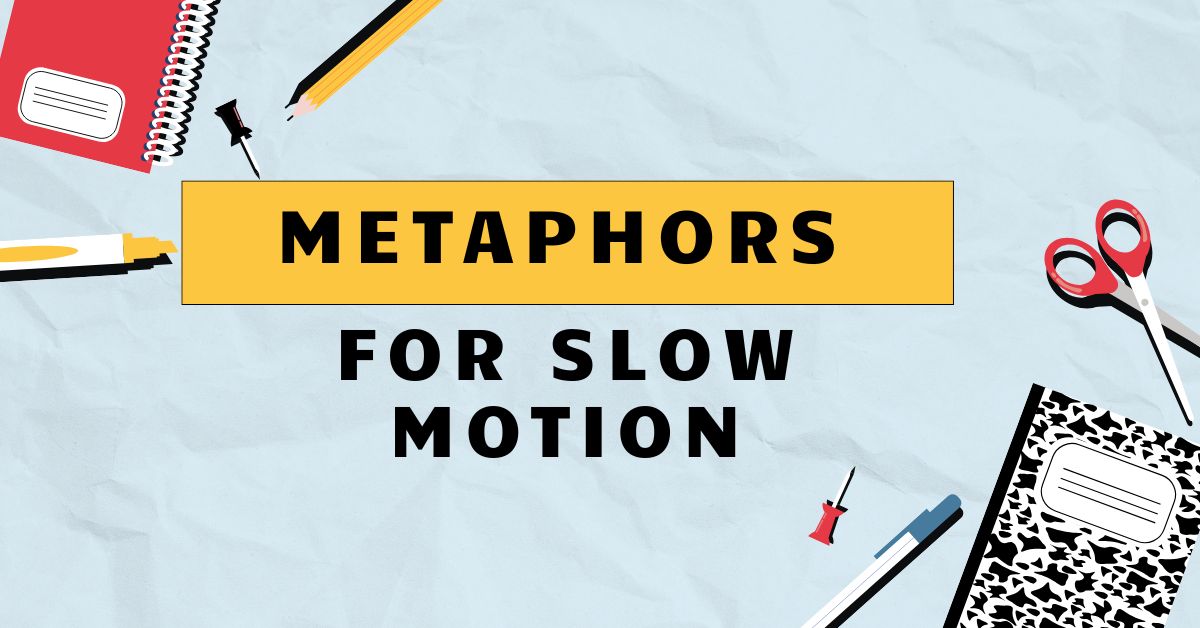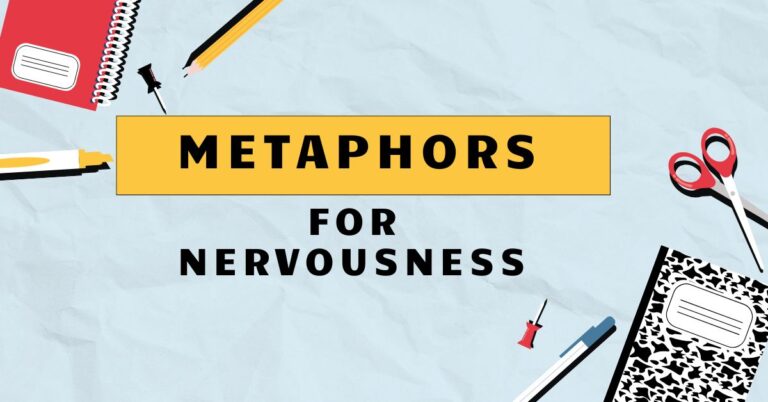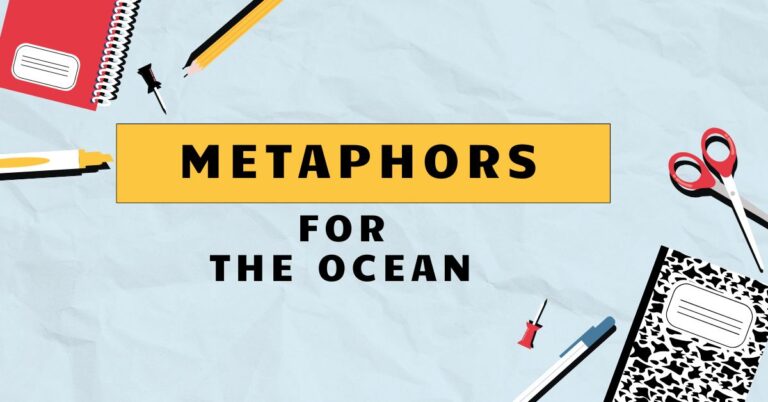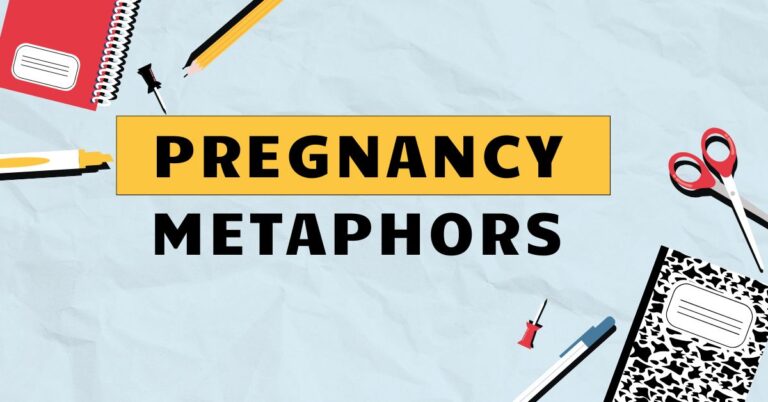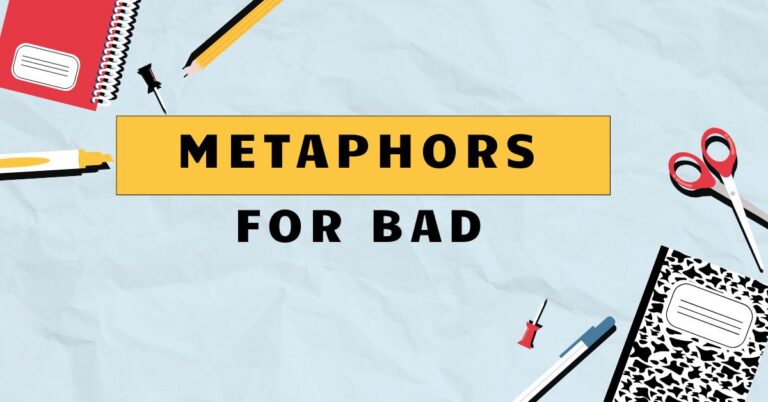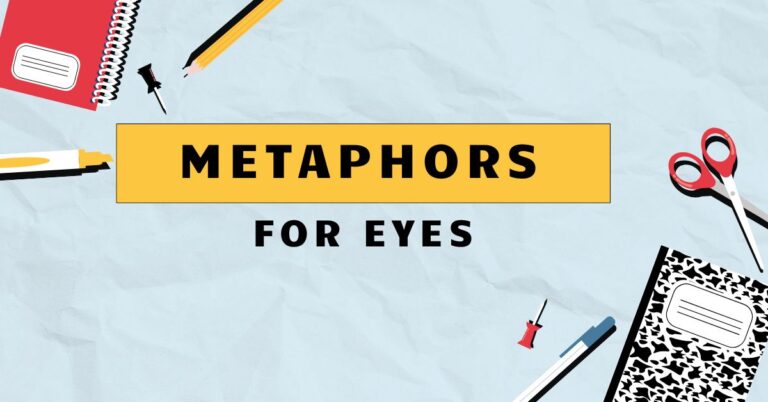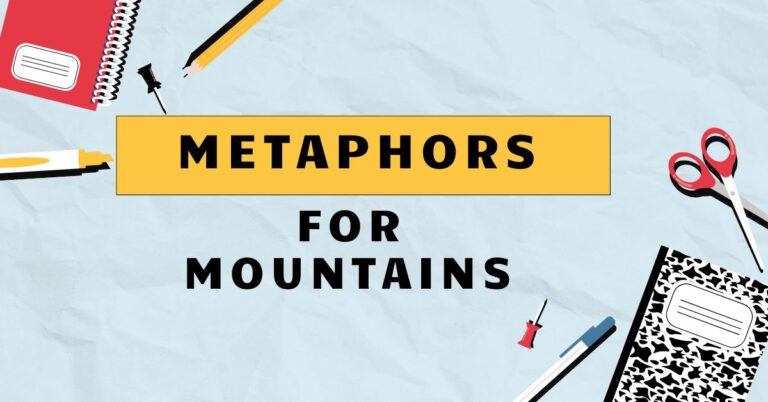49 Slow Motion Metaphors: A Comprehensive Guide to Expressing Slowness
Metaphors are powerful tools in the English language, allowing us to paint vivid pictures and convey complex ideas with brevity and impact. When it comes to describing slowness, metaphors can elevate our language from the mundane to the memorable.
Understanding how to use metaphors effectively to depict slowness can significantly enhance your writing and speaking skills. This article provides a comprehensive exploration of metaphors for slowness, covering their definitions, structures, types, usage rules, common mistakes, and advanced applications.
This guide is ideal for English language learners, writers, and anyone looking to enrich their vocabulary and expressive capabilities.
This article will equip you with the knowledge and skills to use metaphors for slowness accurately and creatively. By diving into the nuances of these metaphors, you’ll gain a deeper appreciation for the English language and its capacity for vivid expression.
Table of Contents
- Introduction
- Definition of Metaphors for Slow
- Structural Breakdown
- Types and Categories of Metaphors for Slow
- Examples of Metaphors for Slow
- Usage Rules for Metaphors of Slow
- Common Mistakes When Using Metaphors for Slow
- Practice Exercises
- Advanced Topics
- Frequently Asked Questions
- Conclusion
Definition of Metaphors for Slow
A metaphor, at its core, is a figure of speech that directly compares two unlike things, suggesting a similarity between them without using words like “like” or “as.” When we talk about “metaphors for slow,” we’re referring to the various ways we can use figurative language to describe something that is moving, progressing, or happening at a reduced pace. Metaphors for slow help us to express not just the fact of slowness, but also its quality, impact, and emotional resonance.
Metaphors for slowness can be classified based on the domains from which they are drawn. These domains can include animals, nature, objects, processes, and abstract concepts.
Each category offers a unique lens through which to view and articulate slowness.
The function of these metaphors is to create a more vivid and relatable understanding of slowness. Rather than simply stating that something is slow, a metaphor can evoke a particular feeling or image, making the description more engaging and memorable.
For example, instead of saying “the process was slow,” you might say “the process was like watching paint dry,” which conveys not only slowness but also boredom and tedium.
Structural Breakdown
The structure of a metaphor typically involves two key elements: thetenorand thevehicle. The tenor is the subject being described (in this case, something that is slow), and the vehicle is the thing to which it is being compared.
The connection between the tenor and the vehicle is the shared characteristic or quality that makes the metaphor effective.
For example, in the metaphor “the traffic crawled,” the tenor is the traffic, and the vehicle is the act of crawling. The shared characteristic is slow movement.
The effectiveness of the metaphor lies in the audience’s understanding of how crawling implies a slow, labored pace.
Metaphors for slow can be expressed in various grammatical forms, including nouns, verbs, adjectives, and adverbs. The choice of form depends on the specific context and the desired effect.
For example:
- Noun: “The project was a snail’s pace.” (Snail’s pace is the metaphor)
- Verb: “Time dragged on that afternoon.” (Dragged is the metaphor)
- Adjective: “The glacial progress frustrated everyone.” (Glacial is the metaphor)
- Adverb: “The information spread leisurely through the office.” (Leisurely is the metaphor)
The effectiveness of a metaphor also depends on the audience’s familiarity with the vehicle. A metaphor that relies on an obscure or unfamiliar reference may not be as effective as one that uses a common and easily understood image.
Types and Categories of Metaphors for Slow
Metaphors for slow can be categorized based on the source domain from which they are drawn. This classification helps to understand the different ways in which slowness can be conceptualized and expressed.
Animal Metaphors
Animal metaphors often draw on the characteristics of animals known for their slow movement or behavior. These metaphors can be particularly effective in conveying a sense of lethargy, deliberateness, or inefficiency.
Examples include “snail’s pace,” “tortoise-like,” and “slothful.” These metaphors evoke images of animals that are known for their slow and deliberate movements. The choice of animal can also add a specific nuance to the metaphor.
For example, “snail’s pace” suggests a very slow and gradual movement, while “tortoise-like” implies a slow but steady and determined approach.
Nature Metaphors
Nature metaphors often use natural phenomena to describe slowness. These can include geological processes, weather patterns, or the growth of plants.
Nature metaphors can be useful in conveying a sense of gradualness, inevitability, or resistance.
Examples include “glacial,” “like watching paint dry,” and “as slow as molasses.” These metaphors draw on images from the natural world to convey a sense of slowness. “Glacial” suggests a slow and inexorable movement, while “like watching paint dry” implies extreme boredom and tedium.
“As slow as molasses” uses a thick, viscous substance to represent slowness.
Object Metaphors
Object metaphors use inanimate objects to describe slowness. These can include heavy objects, objects that are difficult to move, or objects that are associated with inertia.
Object metaphors can be effective in conveying a sense of weight, resistance, or difficulty.
Examples include “stuck in the mud,” “like wading through treacle,” and “a lead weight.” These metaphors use images of objects to convey a sense of slowness. “Stuck in the mud” suggests being trapped and unable to move forward, while “like wading through treacle” implies a slow and difficult progress.
“A lead weight” suggests a heavy burden that is slowing something down.
Process Metaphors
Process metaphors use the steps or phases of a process to describe slowness. These can include processes that are known to be slow, complex, or inefficient.
Process metaphors can be effective in conveying a sense of frustration, complexity, or inefficiency.
Examples include “like navigating a bureaucratic maze,” “a long and winding road,” and “like untangling a ball of yarn.” These metaphors use images of processes to convey a sense of slowness. “Like navigating a bureaucratic maze” suggests a complex and frustrating process, while “a long and winding road” implies a slow and indirect path.
“Like untangling a ball of yarn” suggests a tedious and time-consuming process.
Abstract Metaphors
Abstract metaphors use abstract concepts or ideas to describe slowness. These can include concepts such as time, patience, or progress.
Abstract metaphors can be effective in conveying a sense of emotional or psychological slowness.
Examples include “time stood still,” “a test of patience,” and “progress at a crawl.” These metaphors use abstract concepts to convey a sense of slowness. “Time stood still” suggests a feeling of stagnation or suspension, while “a test of patience” implies a slow and frustrating process.
“Progress at a crawl” suggests a very slow and gradual advancement.
Examples of Metaphors for Slow
To further illustrate the use of metaphors for slow, here are several examples organized by category.
Animal Metaphor Examples
The following table illustrates the use of animal metaphors to describe slowness, providing a range of examples with different contexts.
| Metaphor | Example Sentence | Context |
|---|---|---|
| Snail’s pace | The traffic was moving at a snail’s pace this morning. | Describing slow-moving traffic |
| Tortoise-like | His progress on the project was tortoise-like, but steady. | Describing slow but consistent progress |
| Slothful | The bureaucracy was slothful in processing the paperwork. | Describing inefficient bureaucratic processes |
| Like a hibernating bear | His creativity was like a hibernating bear, dormant and slow to awaken. | Describing a slow start to creativity |
| Crawling like a caterpillar | The website’s loading speed was crawling like a caterpillar. | Describing slow website loading speed |
| Like a tired old dog | The old engine was running like a tired old dog. | Describing a slow and worn-out engine |
| As slow as a herd of turtles | The line at the DMV moved as slow as a herd of turtles. | Describing a very slow-moving line |
| Like a snail leaving a trail | The investigation progressed like a snail leaving a trail, barely noticeable. | Describing a slow and subtle investigation |
| A lethargic lizard | He approached the task with the energy of a lethargic lizard. | Describing a slow and unenthusiastic approach |
| Like watching a worm inch forward | Trying to get him to agree was like watching a worm inch forward. | Describing a difficult and slow attempt |
| As patient as a spider weaving its web | She was as patient as a spider weaving its web, taking her time. | Describing someone taking their time |
| Like a tortoise carrying its shell uphill | The negotiation process felt like a tortoise carrying its shell uphill. | Describing a difficult and slow negotiation |
| Like a caterpillar turning into a butterfly | His transformation was like a caterpillar turning into a butterfly, a slow and gradual process. | Describing a slow transformation |
| The pace of a sleepy snail | The project moved at the pace of a sleepy snail. | Describing a very slow moving project |
| Moving like an ant carrying a crumb | He moved like an ant carrying a crumb, slow and deliberate. | Describing slow and deliberate movement |
| Like a tired old horse | The computer ran like a tired old horse, struggling with each task. | Describing a slow computer |
| Sluggish like a snake in winter | His mind was sluggish like a snake in winter. | Describing a sluggish mind |
| As slow as a sloth climbing a tree | The data transfer was as slow as a sloth climbing a tree. | Describing a slow data transfer |
| Like a herd of elephants tiptoeing | The legislative process moved like a herd of elephants tiptoeing. | Describing a slow legislative process |
| Similar to a snail crossing a highway | His chances of success were similar to a snail crossing a highway. | Describing low chances of success |
| Crawling like a snail on a hot pavement | The economy was crawling like a snail on a hot pavement. | Describing a slow economy |
| Moving at the pace of a tortoise in quicksand | Her recovery was moving at the pace of a tortoise in quicksand. | Describing a slow recovery |
| Like a sloth trying to win a race | His efforts to impress were like a sloth trying to win a race. | Describing futile efforts |
| As slow as a snail in molasses | Progress felt as slow as a snail in molasses. | Describing extremely slow progress |
Nature Metaphor Examples
The following table showcases nature metaphors used to express slowness, providing a variety of scenarios and their metaphorical representations.
| Metaphor | Example Sentence | Context |
|---|---|---|
| Glacial | The pace of the negotiations was glacial. | Describing slow negotiations |
| Like watching paint dry | Waiting for the results was like watching paint dry. | Describing a boring wait |
| As slow as molasses | The server was running as slow as molasses. | Describing a slow server |
| Like a creeping vine | The problem spread like a creeping vine, slowly but surely. | Describing a slow but persistent problem |
| Like the slow erosion of a riverbank | His confidence eroded like the slow erosion of a riverbank. | Describing a gradual loss of confidence |
| As slow as a tree growing | Change happened as slow as a tree growing. | Describing a slow change |
| Like a glacier moving downhill | The project’s progress was like a glacier moving downhill. | Describing a slow and inevitable progress |
| As slow as honey pouring in winter | The information flowed as slow as honey pouring in winter. | Describing a slow flow of information |
| Like the rising of the sap in spring | Her understanding grew like the rising of the sap in spring. | Describing a slow and gradual growth of understanding |
| As slow as a desert rain | The results came as slow as a desert rain. | Describing slow arrival of results |
| Like a slow moving river | Life in the village was like a slow-moving river. | Describing a slow-paced life |
| As slow as a mountain forming | The process felt as slow as a mountain forming. | Describing an extremely slow process |
| Like the gentle sway of trees | The rhythm of the song was like the gentle sway of trees. | Describing a slow and gentle rhythm |
| As slow as sap dripping | The updates were coming as slow as sap dripping. | Describing slow updates |
| Like the tide coming in | His influence grew like the tide coming in. | Describing slow growth of influence |
| As slow as a rock weathering | The change was as slow as a rock weathering. | Describing a slow change |
| Like moss growing on a stone | His reputation grew like moss growing on a stone. | Describing a slow growth of reputation |
| As slow as sediment settling | The dust settled as slow as sediment settling. | Describing slow settling of dust |
| Like watching grass grow | Analyzing the data was like watching grass grow. | Describing a tedious task |
| As slow as a cloud drifting | The days passed as slow as a cloud drifting. | Describing slow passing of days |
| Like a tree growing its roots | The relationship developed like a tree growing its roots. | Describing slow development of a relationship |
| As slow as a flower blooming | The revelation came as slow as a flower blooming. | Describing a slow revelation |
| Like a sunset fading | His energy diminished like a sunset fading. | Describing a slow decline in energy |
| As slow as the earth spinning | The realization dawned as slow as the earth spinning. | Describing a slow realization |
Object Metaphor Examples
This table provides examples of object metaphors used to describe slowness, offering varied scenarios with metaphorical representations.
| Metaphor | Example Sentence | Context |
|---|---|---|
| Stuck in the mud | The project was stuck in the mud due to bureaucratic hurdles. | Describing a project facing obstacles |
| Like wading through treacle | Trying to understand the instructions was like wading through treacle. | Describing a difficult task |
| A lead weight | The economy felt like a lead weight, dragging everything down. | Describing a heavy economic burden |
| Like pushing a boulder uphill | Getting the team to agree was like pushing a boulder uphill. | Describing a difficult agreement process |
| As slow as dial-up internet | His response time was as slow as dial-up internet. | Describing a slow response time |
| Like a rusty cog | His thinking was like a rusty cog, slow and creaky. | Describing slow and inefficient thinking |
| As slow as an old record playing | The presentation dragged on as slow as an old record playing. | Describing a slow presentation |
| Like a broken clock | Her motivation was like a broken clock, stuck in slow motion. | Describing a lack of motivation |
| As slow as a drip from a leaky faucet | The information trickled in as slow as a drip from a leaky faucet. | Describing a slow trickle of information |
| Like a stalled car | His career felt like a stalled car, going nowhere. | Describing a stagnant career |
| As slow as a manual typewriter | The process was as slow as a manual typewriter. | Describing a slow process |
| Like a chain dragging underwater | Progress felt like a chain dragging underwater. | Describing slow progress |
| As slow as a hand-cranked machine | The system operated as slow as a hand-cranked machine. | Describing a slow operating system |
| Like a flat tire | The enthusiasm was like a flat tire, deflated and slow. | Describing deflated enthusiasm |
| As slow as a horse-drawn carriage | The delivery was as slow as a horse-drawn carriage. | Describing a slow delivery |
| Like a ship in a bottle | His potential felt like a ship in a bottle, trapped and slow to emerge. | Describing trapped potential |
| As slow as an abacus calculating | The calculations were as slow as an abacus calculating. | Describing slow calculations |
| Like a clock with dying batteries | Her energy was like a clock with dying batteries. | Describing low energy levels |
| As slow as a rusty swing set | The movement was as slow as a rusty swing set. | Describing slow movement |
| Like an anchor holding back a boat | His doubts were like an anchor holding back the boat. | Describing doubts holding back progress |
| As slow as a broken conveyor belt | The production line moved as slow as a broken conveyor belt. | Describing a slow production line |
| Like a cog slipping in a machine | Her focus was like a cog slipping in a machine. | Describing a loss of focus |
| As slow as a manual film camera | The process was as slow as a manual film camera. | Describing a slow process |
Process Metaphor Examples
| Metaphor | Example Sentence | Context |
|---|---|---|
| Like navigating a bureaucratic maze | Getting approval was like navigating a bureaucratic maze. | Describing a complex approval process |
| A long and winding road | The recovery process was a long and winding road. | Describing a lengthy recovery |
| Like untangling a ball of yarn | Solving the problem was like untangling a ball of yarn. | Describing a tedious problem-solving task |
| Like climbing a never-ending staircase | The project felt like climbing a never-ending staircase. | Describing a project with no end in sight |
| As slow as watching a kettle boil | The wait felt as slow as watching a kettle boil. | Describing a long wait |
| Like baking bread from scratch | Learning the new software was like baking bread from scratch. | Describing a slow learning process |
| As slow as waiting for a package to arrive | The anticipation felt as slow as waiting for a package to arrive. | Describing a slow anticipation |
| Like reading a book with missing pages | Understanding the situation was like reading a book with missing pages. | Describing difficulty in understanding |
| As slow as developing film in a darkroom | The process was as slow as developing film in a darkroom. | Describing a slow process |
| Like building a house brick by brick | Progress was like building a house brick by brick. | Describing a slow and steady progress |
| As slow as waiting for a computer to boot up | The start of the meeting felt as slow as waiting for a computer to boot up. | Describing a slow start |
| Like assembling a puzzle with missing pieces | The investigation was like assembling a puzzle with missing pieces. | Describing a difficult investigation |
| As slow as learning a foreign language | Acquiring the skill felt as slow as learning a foreign language. | Describing a slow acquisition of skills |
| Like solving a complex equation | Finding the answer was like solving a complex equation. | Describing a difficult solution |
| As slow as waiting for a plant to sprout | The progress felt as slow as waiting for a plant to sprout. | Describing slow progress |
| Like painting a masterpiece one brushstroke at a time | The creation was like painting a masterpiece one brushstroke at a time. | Describing a meticulous creation |
| As slow as waiting for a webpage to load on dial-up | The download was as slow as waiting for a webpage to load on dial-up. | Describing a slow download |
| Like writing a novel one word at a time | The project advanced like writing a novel one word at a time. | Describing a slow project advancement |
Abstract Metaphor Examples
| Metaphor | Example Sentence | Context |
|---|---|---|
| Time stood still | During the accident, time stood still. | Describing a moment of crisis |
| A test of patience | The waiting period was a test of patience. | Describing a frustrating wait |
| Progress at a crawl | The negotiations were making progress at a crawl. | Describing slow negotiations |
| Like wading through molasses of despair | He felt like wading through molasses of despair. | Describing a feeling of despair |
| As slow as the gears of change | The gears of change turned slowly in the organization. | Describing slow organizational change |
| Like a mental fog | His thoughts moved like a mental fog. | Describing slow thinking |
| As slow as the wheels of justice | The wheels of justice turn slowly. | Describing a slow justice system |
| Like a heavy heart | His steps were like a heavy heart, slow and burdened. | Describing slow steps due to sadness |
| As slow as a dream fading | The memory faded as slow as a dream fading. | Describing a slow fading memory |
| Like a stagnant pool | His ideas were like a stagnant pool, unmoving. | Describing stagnant ideas |
| As slow as the tick of a clock in a silent room | The seconds passed as slow as the tick of a clock in a silent room. | Describing slowly passing seconds |
| Like a weight on his soul | His guilt felt like a weight on his soul, slowing him down. | Describing guilt slowing someone down |
| As slow as a whispered secret | The news spread as slow as a whispered secret. | Describing slow news propagation |
Usage Rules for Metaphors of Slow
Using metaphors effectively requires careful consideration of several factors. Here are some key rules to keep in mind:
- Clarity: The metaphor should be easily understood by the intended audience. Avoid obscure or overly complex references.
- Relevance: The vehicle should have a clear and logical connection to the tenor. The shared characteristic should be obvious.
- Consistency: Avoid mixing metaphors within the same sentence or paragraph. This can create confusion and undermine the impact of the metaphor.
- Appropriateness: The metaphor should be appropriate for the context and tone of the writing or speech. Avoid using metaphors that are offensive or insensitive.
- Originality: While common metaphors can be effective, strive to use original and creative metaphors that will capture the audience’s attention.
Exceptions to these rules may occur in creative writing, where unconventional or surreal metaphors can be used for artistic effect. However, in most contexts, it is best to adhere to these guidelines to ensure that the metaphor is clear, relevant, and effective.
For example, instead of saying “the project was moving at a snail’s pace,” which is a common and somewhat cliché metaphor, you might say “the project was like a glacier carving its way through the landscape,” which is more original and evocative.
Common Mistakes When Using Metaphors for Slow
Several common mistakes can undermine the effectiveness of metaphors for slow. Being aware of these mistakes can help you to avoid them and use metaphors more effectively.
| Mistake | Incorrect Example | Correct Example | Explanation |
|---|---|---|---|
| Mixed Metaphor | The project was a snail’s pace, but we needed to grab the bull by the horns. | The project was moving at a snail’s pace. We needed to find a way to speed it up. | Mixing metaphors creates confusion and weakens the impact. |
| Cliché | The process was as slow as molasses. | The process was like honey hardening in winter. | Overused metaphors lack impact. Choose fresher comparisons. |
| Inappropriate Metaphor | The surgery was like watching paint dry. | The recovery from surgery was like watching paint dry. | Ensure the metaphor fits the context and isn’t insensitive. |
| Unclear Connection | The meeting was like a lemon. | The meeting was like a lemon, sour and unproductive. | The connection between tenor and vehicle must be clear. |
| Overly Complex Metaphor | The negotiation was a quantum entanglement of semantic differentials. | The negotiation was like untangling a complex web. | Keep the metaphor simple enough for the audience to grasp. |
Practice Exercises
Test your understanding of metaphors for slow with these practice exercises.
| Exercise Number | Question | Correct Answer |
|---|---|---|
| 1 | Complete the sentence: “The traffic was moving at a _______ pace.” | Snail’s |
| 2 | What type of metaphor is “glacial”? | Nature |
| 3 | Rewrite the sentence using a metaphor for slow: “The project was progressing very slowly.” | The project was moving at a snail’s pace. (or similar) |
| 4 | Identify the metaphor in the sentence: “The bureaucracy was like wading through treacle.” | Wading through treacle |
| 5 | What is wrong with the sentence: “The project was a snail’s pace, but we needed to grab the bull by the horns”? | Mixed metaphor |
| 6 | Choose the best metaphor to describe a slow computer: a) a rocket b) a tortoise c) a cheetah | b) a tortoise |
| 7 | Complete the sentence: “Waiting for the results was like _______.” | watching paint dry |
| 8 | Which of these is an animal metaphor for slow: a) a long and winding road b) as slow as molasses c) slothful | c) slothful |
| 9 | Rewrite the sentence using a metaphor for slow: “The server was very slow.” | The server was as slow as molasses. (or similar) |
| 10 | Identify the metaphor in the sentence: “The negotiations were glacial.” | Glacial |
Advanced Topics
For advanced learners, exploring more complex aspects of metaphors for slow can be rewarding. This includes understanding the cognitive processes involved in metaphor comprehension, the role of cultural context in shaping metaphorical meaning, and the use of extended metaphors to create sustained imagery.
Cognitive linguistics explores how metaphors are not just figures of speech but fundamental ways of thinking. Understanding this can help you to use metaphors more intentionally and effectively.
For example, the concept ofconceptual metaphorsuggests that we understand abstract concepts in terms of more concrete ones. The metaphor “time is money” reflects this, influencing how we value and spend our time.
Cultural context plays a significant role in shaping metaphorical meaning. A metaphor that is effective in one culture may not be understood or appreciated in another.
For example, certain animals or natural phenomena may have different connotations in different cultures. Therefore, it is important to be aware of the cultural background of your audience when using metaphors.
Extended metaphors involve developing a single metaphor over the course of a paragraph, an essay, or even an entire work of literature. This can create a powerful and sustained image that resonates deeply with the audience.
For example, a writer might use the metaphor of a journey to describe the process of personal growth, exploring different aspects of the journey in detail.
Frequently Asked Questions
Conclusion
Metaphors for slow are powerful tools for enhancing communication, adding depth and color to descriptions, and making complex ideas more accessible. By understanding the different types of metaphors, following usage rules, and avoiding common mistakes, you can use these figures of speech effectively in your writing and speaking.
Practice the exercises provided, explore advanced topics, and continue to refine your understanding to master the art of using metaphors for slow.
Whether you are an English language learner, a writer, or simply someone who appreciates the beauty of language, the ability to use metaphors effectively will enrich your expressive capabilities and deepen your appreciation for the nuances of the English language. Embrace the creativity and precision that metaphors offer, and watch your communication skills flourish.

